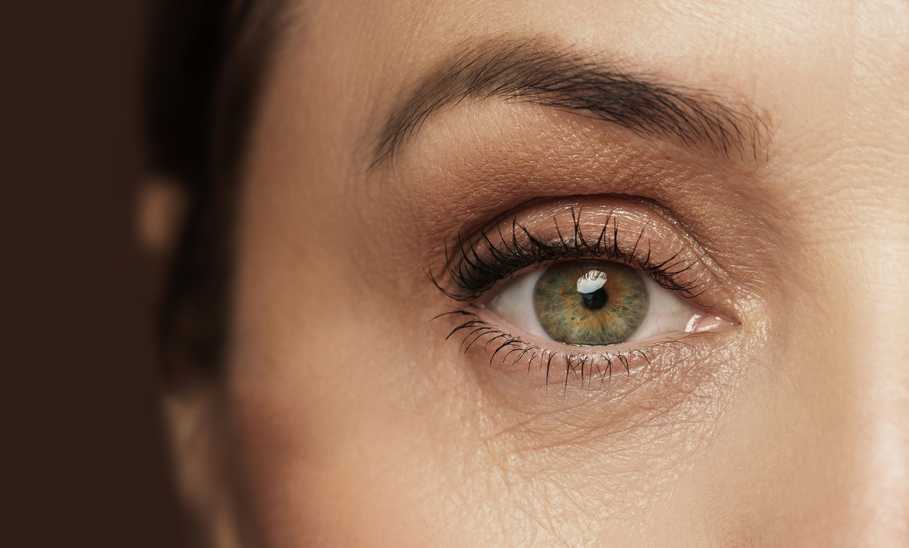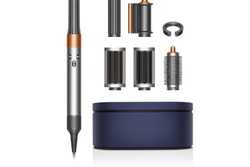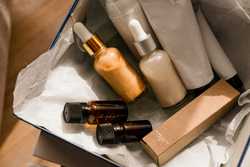There comes a time in every person’s life when they lean into the bathroom mirror and see it: Crow’s feet, bags, and/or dark circles around their eyes that were never there before. It’s a fact of life that your skin loses plumpness, volume, and moisture as you age. Lifestyle factors like smoking, sun worship, and poor sleep habits certainly don’t help.
The skin around your eyes, though, suffers extra by virtue of the fact that it’s thinner. That’s why a great anti-aging eye cream is a skincare essential. Consistently using an eye cream packed with potent anti-aging ingredients can help slow down the effects of time—and even reduce the appearance of wrinkles, crepe-y skin, puffiness, discoloration, or whatever you see that you don’t like. But with so many anti-aging eye creams on the market, it’s important to hone in on the one that can truly make a difference.
Our top picks for the best anti-aging eye creams for dark circles and wrinkles
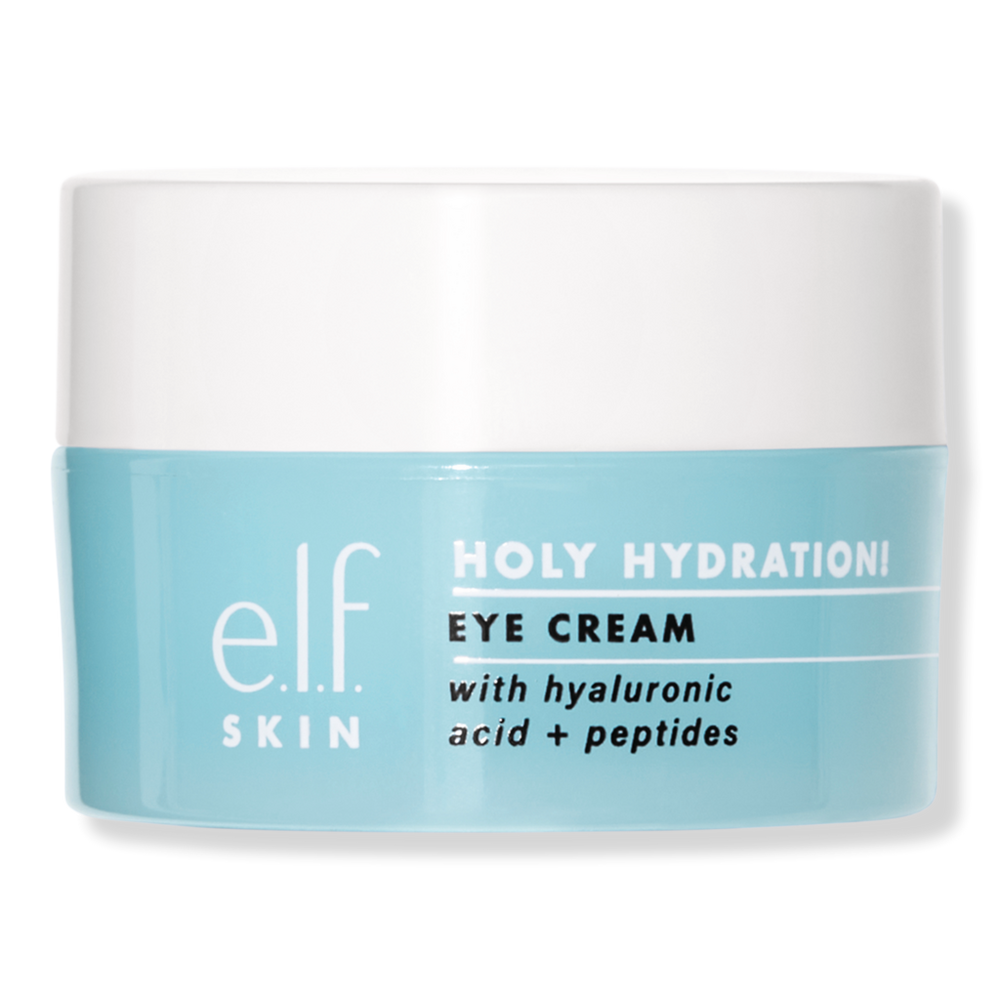
e.l.f. Cosmetics Holy Hydration! Illuminating Eye Cream
This gentle eye cream is so lightweight, it absorbs immediately while delivering hyaluronic acid —which locks in hydration, as Gasso says—and peptides straight to stressed-out lids. In addition to moisturizing, e.l.f. Holy Hydration! also works to plump and firm. It’ll create a nice, smooth surface for makeup, too. And did I mention it’s only 10 bucks?
Specifications
- Active ingredients: Hyaluronic acid, peptides
- Benefits: Hydration, firmness, elasticity
- Size: .53 ounces
- Clean? Yes
- Cruelty-free? Yes
- When to use: Morning and night
- Price: $10
Pros:
- It’s basically a hydration bomb that works for all skin types and doesn’t contain irritating ingredients. And, obviously, the price is right.
Cons:
- It won’t target much beyond dehydration, so consider layering it with a serum.
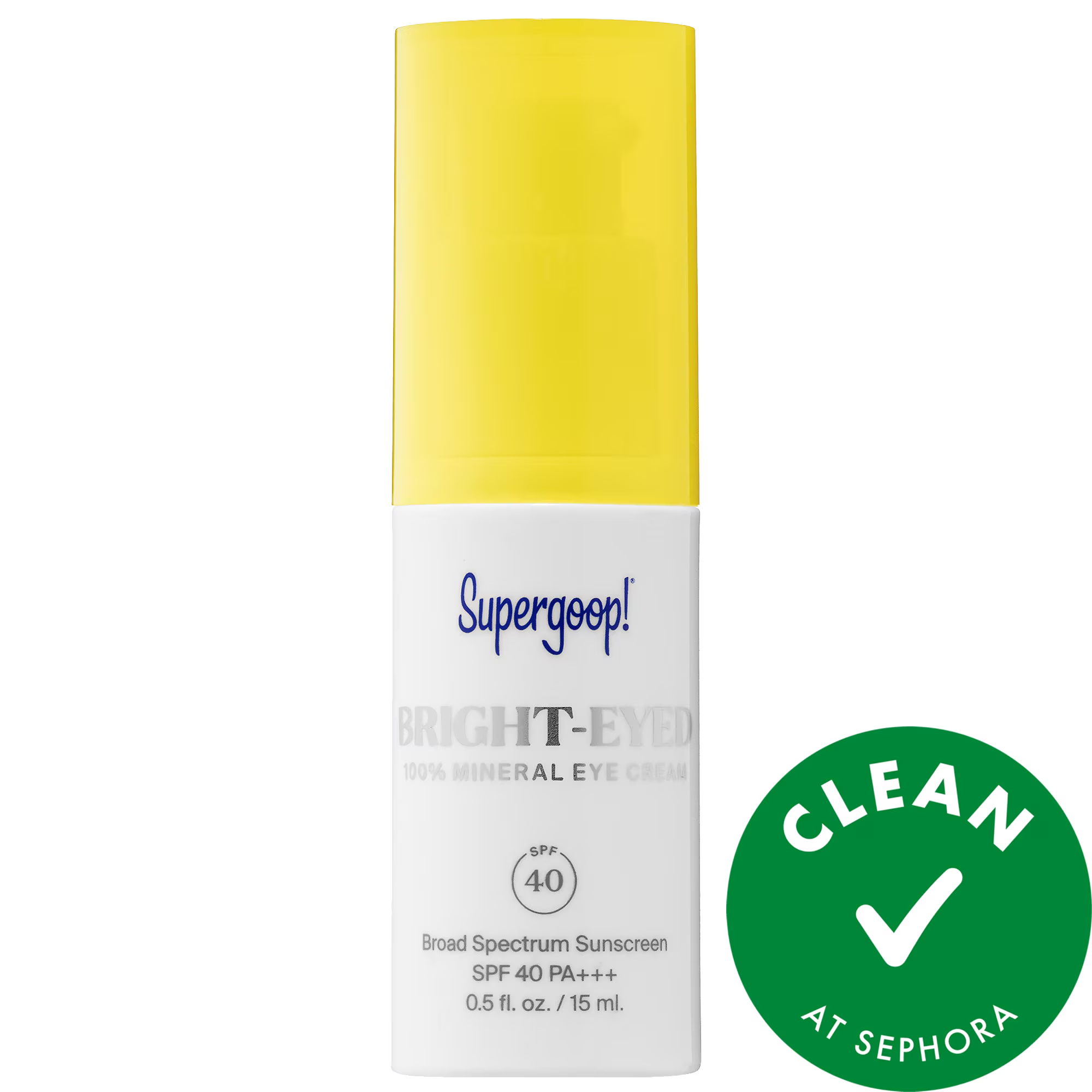
Supergoop! 100% Mineral Bright-Eyed Eye Cream SPF 40 0.5 oz/ 15 mL
Supergoop sunscreen has a cult following, and I use the brand’s SPF products, including Bright-Eyed 100% Mineral Eye Cream SPF 40, daily. It helps moisturize and prime the lid, and of course it protects it from the harmful rays of the sun and my phone. I love how silky the texture is and the fact that it has a pink tint, which helps to visibly brighten the under-eye area. As a person who’s had a lifetime of dark circles that are more prominent when I don’t get enough sleep, I appreciate that this cream has caffeine to help downplay them, especially when I have to face the light of day.
Specifications
- Active ingredients: Zinc oxide, caffeine, probiotics, botanicals
- Benefits: Protects from UV rays and blue light, brightens, smooths, treats dark circles and puffiness
- Size: .5 ounces
- Clean? Yes (and reef-safe)
- Cruelty-free? Yes
- When to use: Throughout the day
- Price: $40
Pros:
- It contains mineral sunscreen with a high SPF and protects your eyes from blue light damage coming from screens.
Cons:
- You may go through this product quicker due to recommended reapplication (for optimal results, you should apply it every 40 minutes).
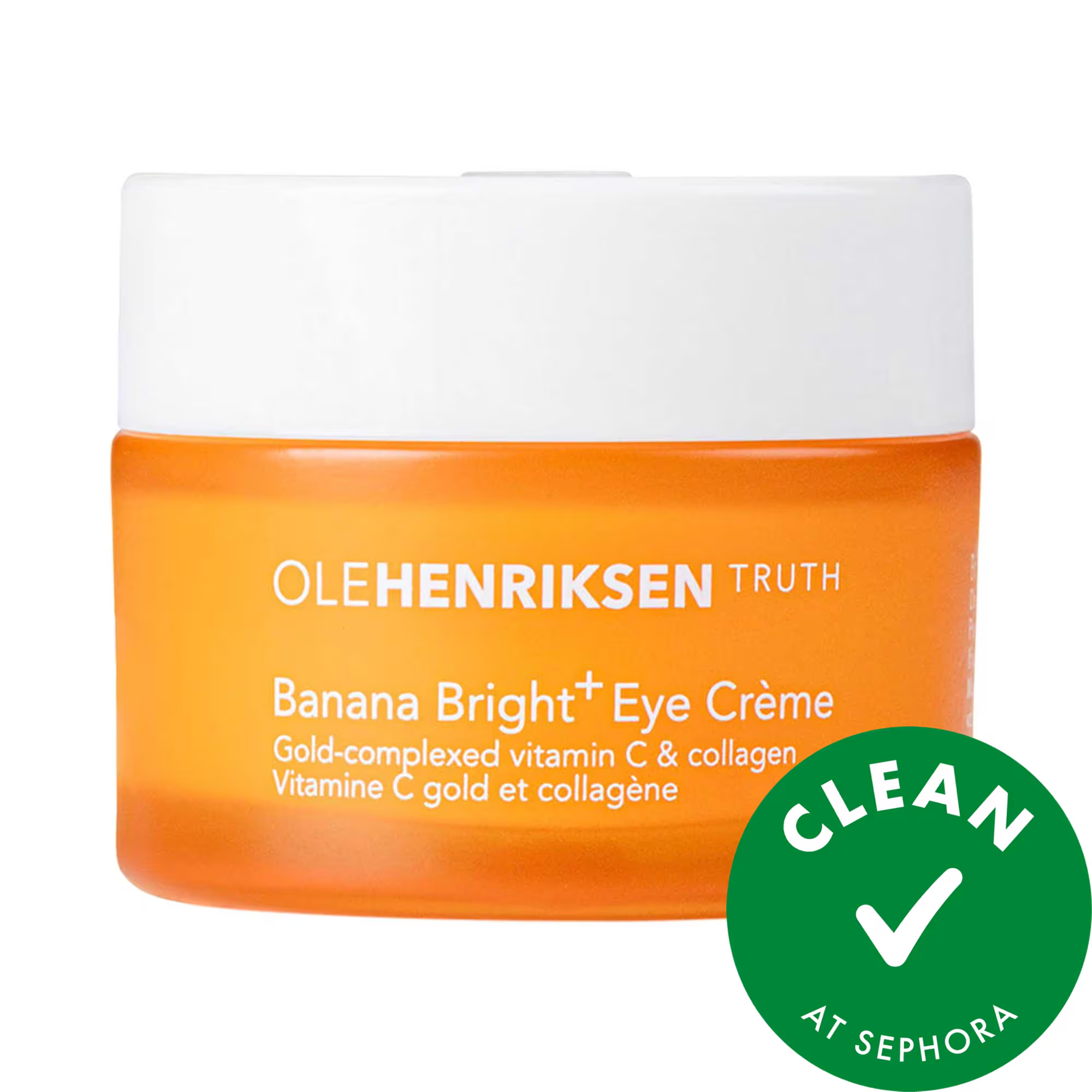
OLEHENRIKSEN Banana Bright+ Vitamin C Eye Crème for Dark Circles 0.5 oz / 15 mL
Experts love this anti-aging eye cream by Ole Henriksen that boasts a triple C complex comprised of water-soluble vitamin C, oil-soluble vitamin C, and vitamin C combined with real gold for ultimate brightness. It’s fragrance-free and gentle, so while vitamin C can irritate some skin, this one is highly unlikely to. “An eye cream with vitamin C can improve hyperpigmentation while deeply hydrating,” says Dr. Fahs. Shopping tip: Ole Henriksen’s Goodnight Glow sleeping creme made our list of the best night creams.
Specifications
- Active ingredients: Vitamin C (ascorbic acid, ascorbate), bioflavonoids, botanicals
- Benefits: Brightens, reduces the appearance of dark circles, hydrates, treats fine lines, primes
- Size: .5 ounces
- Clean? Yes
- Cruelty-free? Yes
- When to use: Morning
- Price: $42
Pros:
- It contains three types of vitamin C as well as actual gold and was recently reformulated to brighten even better.
Cons:
- Some people have had allergic reactions to Banana Bright + Vitamin C eye cream, so if you have sensitive skin, this might be the right product for everyday use.
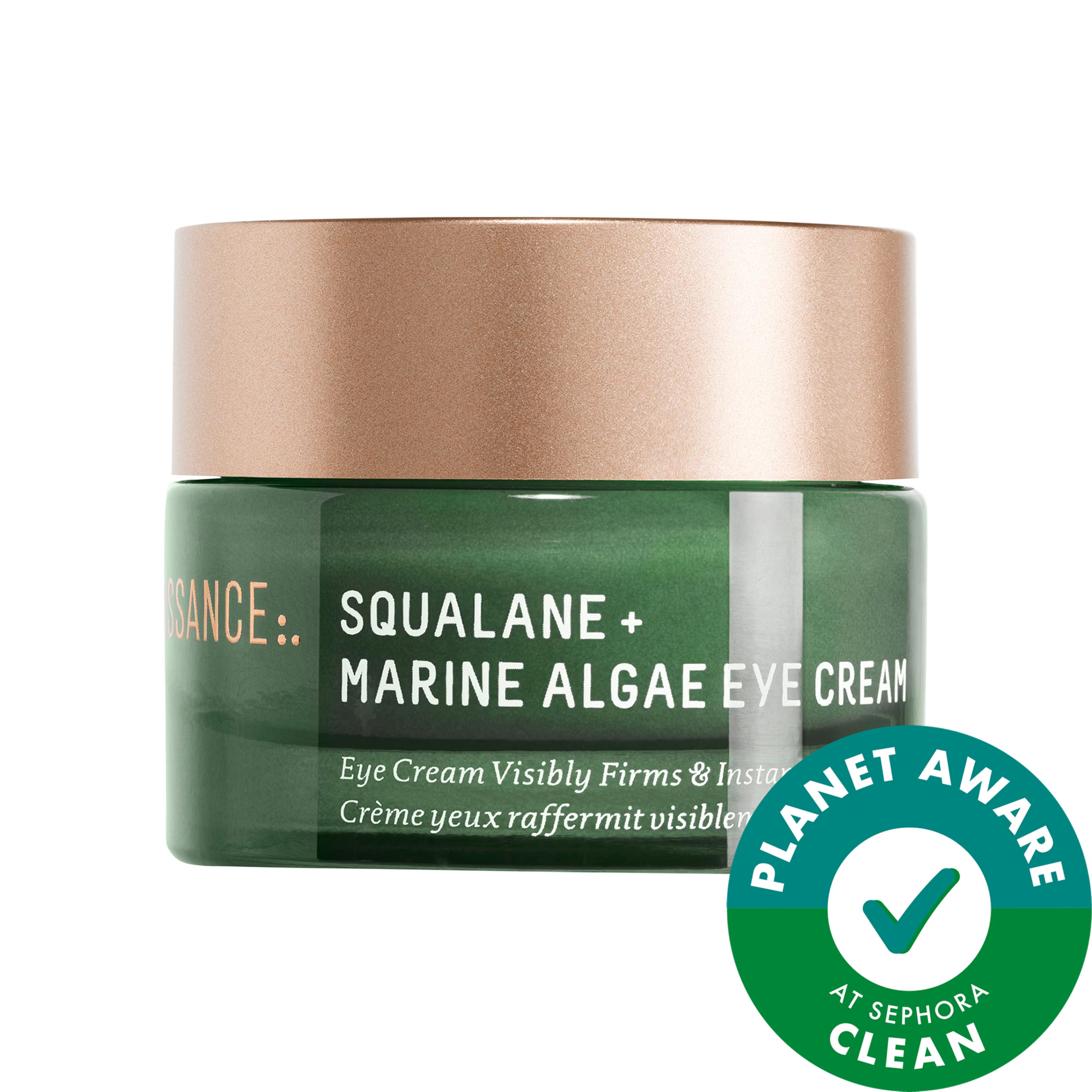
Biossance Squalane + Marine Algae Eye Cream for Fine Lines & Dark Circles 0.5 oz / 15 mL
I use Biossance night cream because I’m crazy about its key ingredient, which is also the star of Squalane + Marine Algae Firming & Lifting Eye Cream. Think it’s odd that I didn’t choose a hyaluronic acid cream for dry skin? Well, I’m not choosing. Hyaluronic acid is a humectant, and squalane is an emollient, meaning that instead of drawing moisture, it traps it. The effects are similar, and squalane is a clean, gentle ingredient that helps with deep hydration.
Specifications
- Active ingredients: Squalane, marine algae complex, paracress extract
- Benefits: Hydrates, moisturizes, firms
- Size: .5 ounces
- Clean? Yes
- Cruelty-free? Yes
- When to use: Morning and night
- Price: $56
Pros:
- This eye cream uses an incredibly hydrating plant-based ingredient called squalene that’s great for sensitive skin.
Cons:
- Squalene has a funny odor.
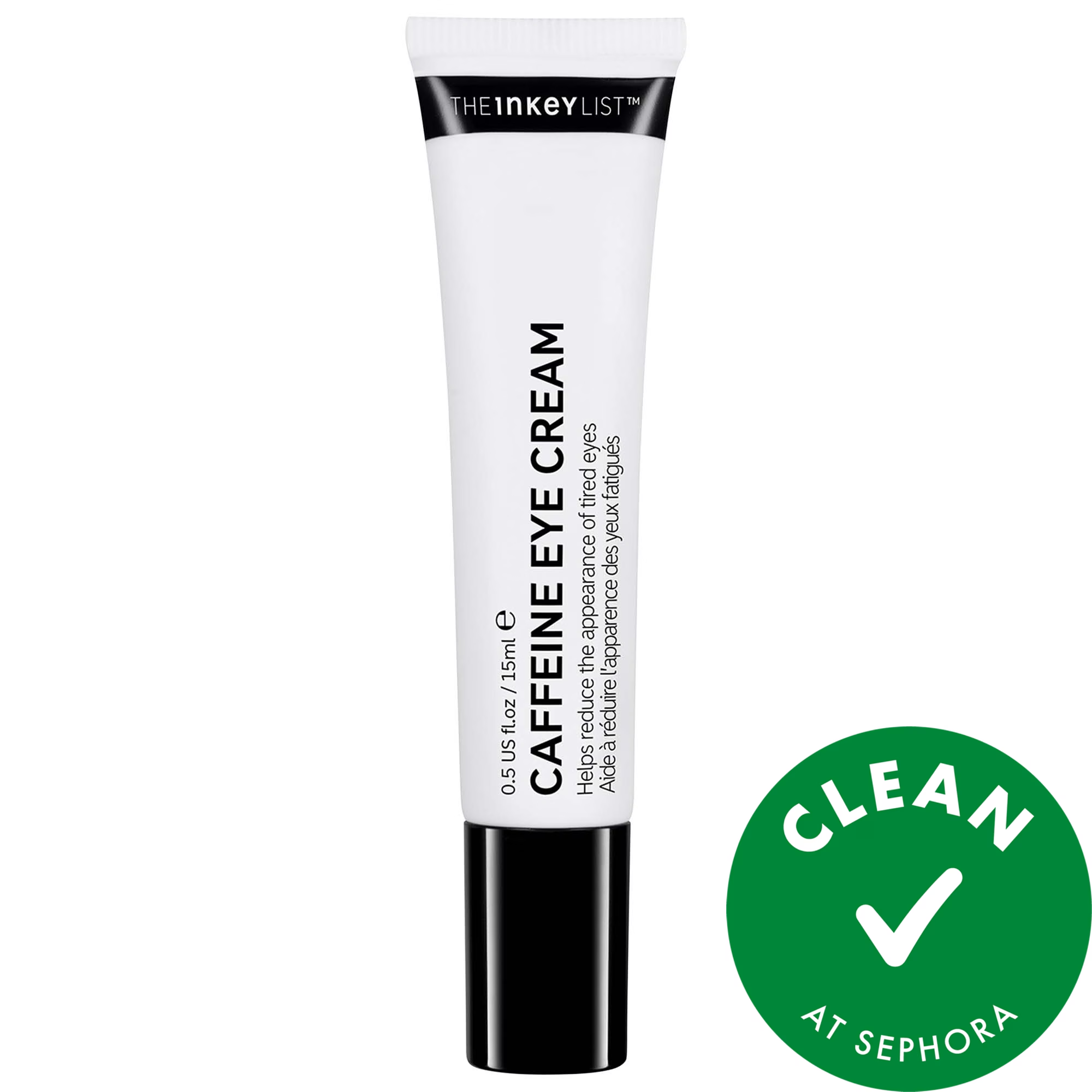
The INKEY List Caffeine De-puffing + Dark Circle Eye Cream 0.5 oz/ 15 mL
There’s a reason people love The Inkey List. Two, in fact: Their products are inexpensive, and they work! Personal note: My own dermatologist has even vetted the brand. So has Dr. Fahs, a huge caffeine proponent. “For improving the appearance of morning puffiness, I prefer to use caffeine-containing eye creams in the morning to constrict under eye blood vessels,” she says. The effect is less puffiness—in fact, caffeine is a leading ingredient for that particular woe—as well as minimized dark circles. This Inkey List anti-aging eye cream is also hydrating and gentle, so use it daily with confidence.
Specifications
- Active ingredients: Caffeine, Matrixyl 3000 (a peptide)
- Benefits: Reduces the appearance of puffiness and dark circles, hydrates, treats fine lines
- Size: .5 ounces
- Clean? Yes
- Cruelty-free? No
- When to use: Morning and night
- Price: $10.99
Pros:
- It’s affordable, yet effective.
Cons:
- The caffeine concentration is on the lower side.
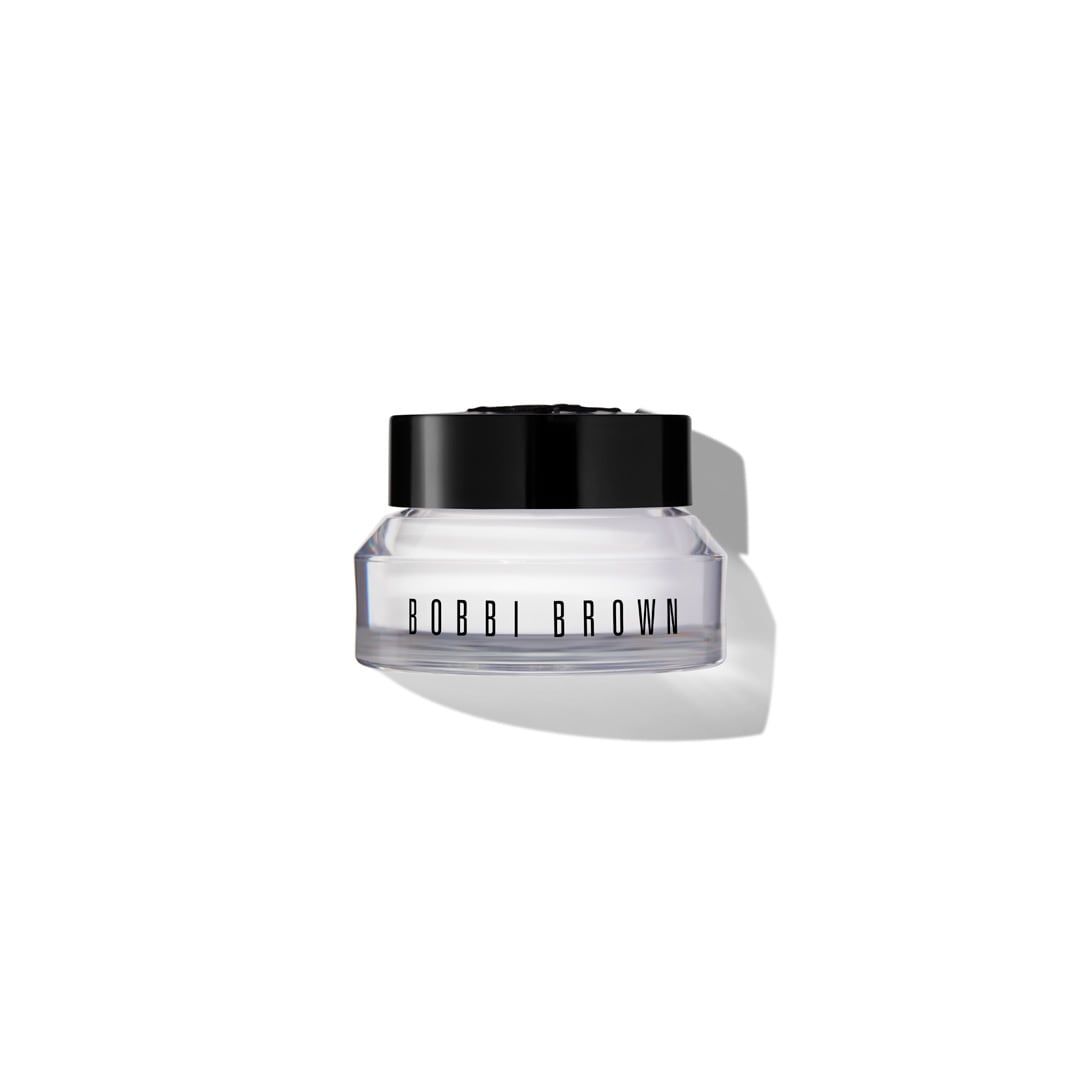
Bobbi Brown Hydrating Eye Cream - 0.5 oz/15 ml
Bobbi Brown Hydrating Eye Cream was actually formulated as a primer for makeup, and skincare professionals love it. It uses a silky combo of jojoba oil, avocado oil, and squalane to prep the surface of your skin for foundation and concealer. Its ingredients are gentle, so it’s great for all skin types.
Specifications
- Active ingredients: Jojoba oil, avocado oil, squalane
- Benefits: Primes, hydrates, smooths
- Size: .5 ounces
- Clean? No
- Cruelty-free? No
- When to use: Before applying makeup
- Price: $58
Pros:
- It’s lightweight, fast-absorbing, and packed with ingredients that specialize in smoothness.
Cons:
- Aside from hydration, it doesn’t treat much else.
- Expensive for a non-specialized eye cream.
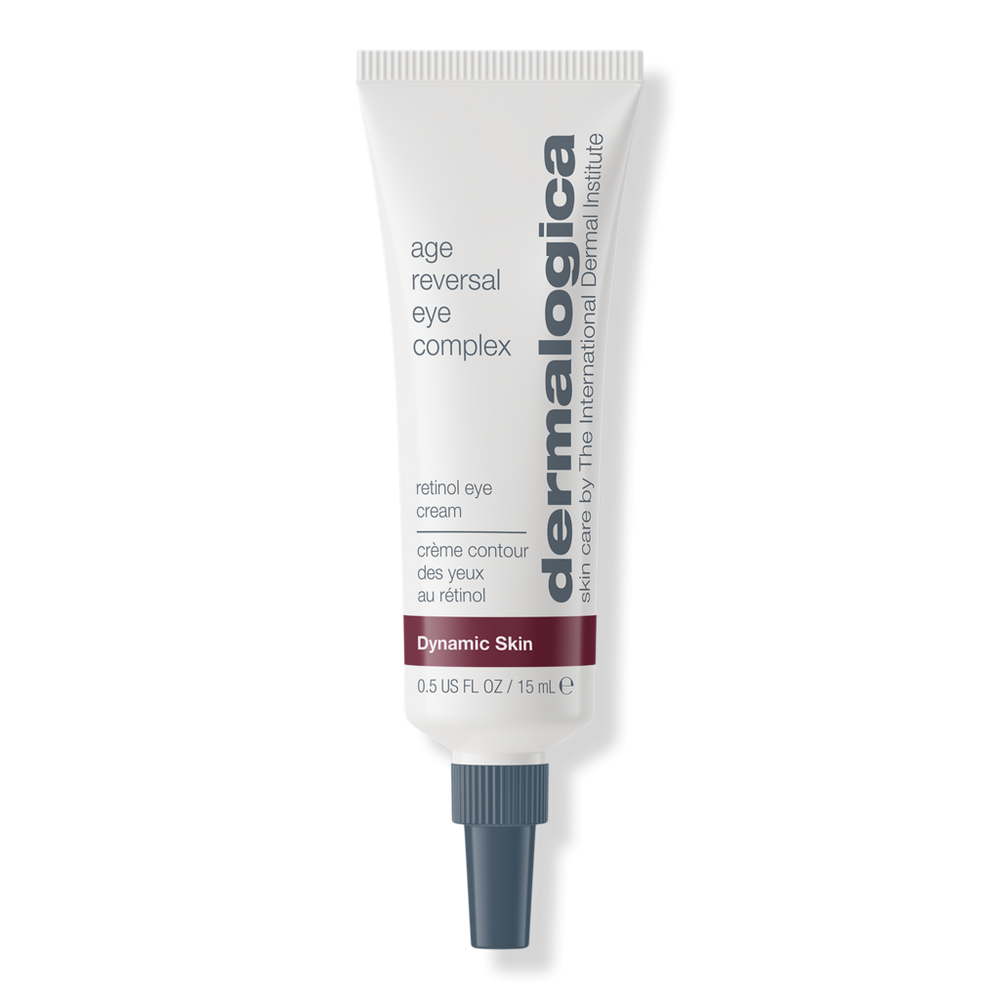
Dermalogica AGE Reversal Eye Complex - .5oz
The popular Dermalogica Age Reversal Eye Cream is a powerhouse. It addresses all the signs of aging, including fine lines and wrinkles, dryness, dullness, dark circles, and puffiness. It uses top-notch ingredients like retinol, niacinamide, and vitamin C, which are among our experts’ favorites. Gasso especially likes retinol to target fine lines and help smooth the skin, but warns you to think twice before using it in the daytime: “No one wants their under eyes to be dry/flaky after applying concealer!” she says.
Specifications
- Active ingredients: Retinol, peptides, Niacinamide, Vitamin C, Ash Tree Bark Extract.
- Benefits: Treats fine lines and wrinkles, brightens, hydrates, smooths, treats dark circles and puffiness.
- Size: .5 ounces
- Clean? Yes
- Cruelty-free? Yes
- When to use: At night
- Price: $79
Pros:
- It has all the best ingredients and treats all the signs of aging, so it’s a great all-in-one.
Cons:
- For the size of the tube, it’s a bit pricey.

Kopari Beauty Niacinamide & Caffeine Eye Bright Cream
“Caffeine constricts the blood vessels so they don’t appear as obvious,” says Dr. Fahs. That’s why this ingredient is so effective at camouflaging dark circles. In this Kopari formulation, caffeine teams up with niacinamide to brighten the under eye area. Since it encourages circulation and discourages water retention, it naturally treats puffiness too: A bonus!
Specifications
- Active ingredients: Caffeine, niacinamide
- Benefits: Firms, promotes cellular growth, treats fine lines and wrinkles, brightens, hydrates, smooths, treats dark circles and puffiness
- Size: .5 ounces
- Clean? No
- Cruelty-free? Yes
- When to use: Morning and night
- Price: $36
Pros:
- It has a high concentration of caffeine and is a great value.
Cons:
- The product leaves a shimmering finish, which might not be everyone’s idea of brightening.

Avocado Fine Line Eye Cream with Retinol
Glow Recipe Avocado Melt Retinol Eye Cream uses encapsulated retinol which is released into your skin slowly throughout the day instead of all at once. This eye cream also has soothing avocado, which contains vitamin C and E. The cream works overtime by brightening and fighting free radical damage, too.
Specifications
- Active ingredients: Retinol, niacinamide, avocado, coffeeberry
- Benefits: Treats fine lines and wrinkles, hydrates, brightens, fights free radical damage
- Size: .5 ounces
- Clean? Yes
- Cruelty-free? Yes
- When to use: Morning and night
- Price: $42
Pros:
- The retinol is encapsulated, so it’s time-released. We also like that avocado is added as an emollient.
Cons:
- Some users have reported developing tiny white lumps called milia around their eyes after using this cream, which might be caused by its thick consistency.
How to choose the best anti-aging eye cream
How important are ingredients in an anti-aging eye cream?
Anti-aging eye creams work in different ways depending on their active ingredients. Not every ingredient in a moisturizer is meant to moisturize; some are formulated to help brighten dull skin, constrict blood vessels to diminish dark circles, or restore plumpness to make lines less visible. So it’s really the ingredients, and not necessarily the brand—and certainly not the marketing language—you should focus on.
What ingredients should you look for in an anti-aging cream?
The key ingredients to look for in an anti-aging eye cream depend on what you’re trying to target. There are a lot out there, but skin care professionals do have their favorites. We turned to two leading experts—Dr. Fatima Fahs, a Michigan-based board-certified dermatologist and founder of Dermy Doc beauty subscription boxes, and New York City-based board-certified aesthetic injector Suzanna Gasso of SG Aesthetics—to illuminate the eye-cream debate.
They recommend looking for the following key ingredients in anti-aging eye creams.
- Hyaluronic acid: This is a humectant that draws in moisture and helps plump the area, so it’s best for hydration.
- Caffeine: This is helpful for constricting blood vessels in the under-eye area and for improving blue/purple discoloration and puffiness.
- Ascorbic acid (vitamin C) and/or kojic acid: These antioxidants fight free-radical damage and improve hyperpigmentation and darkening under the eyes.
- Niacinamide: This ingredient brightens and reduces hyperpigmentation.
- Peptides: These are best for improving firmness and elasticity.
- Retinol: This helps increase collagen production, improve texture, and reduce fine lines.
How we selected the best anti-aging eye creams
To find the best anti-aging eye creams, we first did extensive research on the ingredients that actually matter for a quality formula (and results), along with thoroughly understanding how eye creams are absorbed into the skin and what improvements a cream can actually realistically make. To further narrow down the field, we spoke to skincare experts for their recommendations on ingredients to look for and products that they have observed resulted in measurable results. Additionally, we researched the top concerns for anti-aging eye creams and did extensive background research on the top-rated brands (in terms of quality of formulations and positive results from customers, in addition to quality customer service). I also drew upon decades of personal experience in writing about skincare products along with a deep personal interest and understanding in this topic.
When should you apply anti-aging eye cream?
“Under eye creams should ideally be applied daily. Depending on the ingredients, one may prefer to apply them in the morning or evening,” says Dr. Fahs. She notes that retinol-based eye creams work best at night, as sunlight can destabilize retinol and render it ineffective. “For improving the appearance of morning puffiness, I prefer to use caffeine-containing eye creams in the morning to constrict under eye blood vessels,” she adds.
Gasso points out other factors to consider, too, including your skin type and seasonal weather changes. “I like to use my eye cream at night and apply a thicker cream twice a day during the winter time, as opposed to a thinner cream once a day in the spring/summer time,” she says. These are some of Gasso’s anti-aging eye cream tips for each skin type:
- Oily skin: “I recommend using a thinner cream that is oil-free year-round.”
- Combination skin: “The cream must be suitable for all skin-types.”
- Dry skin: “Get a cream with the main ingredient being hyaluronic acid to really plump the skin and lock in the hydration. Keep in mind those with dry skin tend to need to apply their eye creams both in the morning and at night.”
She adds that she personally prefers using eye cream at night only, as “it feels too heavy combined with makeup.”
How should you apply anti-aging eye cream?
“Eye creams are best applied on clean skin, ideally before your moisturizer, to allow the active ingredients to absorb,” says Fahs. She says that it’s fine to use your finger to apply eye cream; just remember to gently tap the product over the area with minimal pressure so you’re not repeatedly tugging on delicate skin.
For incorporating eye cream into your skincare routine, Gasso recommends this order of application: Toner, then moisturizer, then eye cream last. “I prefer to apply the cream with my finger, gently massaging the product with my index finger from the inner to the outer corner of my eye.”
Frequently asked questions (FAQs)
What does anti-aging eye cream do?
Using an anti-aging eye cream is routine maintenance for healthy, hydrated skin. “Realistically, under-eye creams can soften the skin in the area over time, and provide great hydration, especially those with peptides and hyaluronic acid,” says Gasso.
Does anything really help under eye wrinkles?
“When it comes to fine lines and wrinkles, I’ve only seen mild improvement,” Gasso says, when asked if eye creams can improve wrinkles. Things like puffiness and dark circles from lack of sleep come from within and require lifestyle changes to achieve what eye creams alone cannot. (However, if puffiness is a concern, consider using a face roller made specifically for the eye area or an ice therapy tool—for more on the latter, read our round-up of the best skin care tools that offer spa-level results.)
Dr. Fahs adds that eye creams cannot change two key factors: genetics and anatomy. “Many people have genetically dark under-eye skin,” says Fahs, as opposed to dark circles from factors like lack of sleep. “[Genetic discoloration] is difficult, near impossible to treat with creams.” As for anatomy, “if the undereye area is hollow and the eyes are sunken or there is a prominent groove below the eye, this will likely not improve with a cream. Instead, for patients who have hollowing of the under eye, we recommend in-office procedures such as under-eye dermal filler or platelet rich plasma injections.”
Gasso agrees, noting that a healthy skincare routine combined with in-office treatments like platelet-rich plasma, platelet-rich fibrin, peels, hyaluronic acid fillers, and laser therapy yield the most noticeable results.
What is the best cream for deep wrinkles between eyes?
For the reasons above, deep wrinkles between the eye area are best addressed with professional treatments rather than anti-aging eye creams. If you are interested in adding a cream to your routine, a night cream is a better choice for this specific area.
Can I use eye cream after 2 years?
In general, factory-sealed skincare products are safe to use for about two years after production. (As long as they’ve been kept out of extreme temperatures.) However, once a product is opened, air, moisture, and bacteria are introduced into the cream. Over time, ingredients lose their potency after exposure and bacteria can grow. Using old eye creams runs the risk of eye and skin infections, among other serious health concerns. Therefore, it’s safest to toss opened eye cream after 3-6 months.
The information presented here is created by TIME Stamped and overseen by TIME editorial staff. To learn more, see our About Us page.
